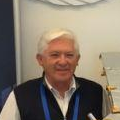Earth Observation in Support of Sustainable Water Resources Management
A special issue of Remote Sensing (ISSN 2072-4292). This special issue belongs to the section "Environmental Remote Sensing".
Deadline for manuscript submissions: closed (31 March 2024) | Viewed by 6358
Special Issue Editors
2. Albavalor S.L.U., University of Valencia Science Park, Valencia, Spain
Interests: remote sensing; soil moisture; earth observation; validation; vegetation biophysical parameters; water resources management and sustainability
Special Issues, Collections and Topics in MDPI journals
Interests: earth observation and geo-information for policy support and international cooperation support (SDGs); food security; satellite image analysis; agricultural applications; groundwater and land cover mapping; vegetation parameters; validation
Special Issues, Collections and Topics in MDPI journals
Interests: water cycle; water quality; ocean health; climate change; essential climate variables; ocean and coastal management
Interests: water resources management; environmental impact assessment; decision support systems; multi-criteria analyses; heuristics; machine learning; participatory processes
Special Issues, Collections and Topics in MDPI journals
Special Issue Information
Dear Colleagues,
Sustainable Development Goal #6 (SDG#6) refers to ensuring access to water and sanitation for all, focusing on the sustainable management of water resources, wastewater and ecosystems, and acknowledging the importance of an enabling environment. In this Special Issue, authors are kindly requested to submit manuscripts on the advanced operational tools and services based on Earth observation data and products to manage water resources in a sustainable way. Earth observation techniques can support and assist in the systematic monitoring and review of progress towards SDG#6 goals and targets by assessing the overall indicator set. Furthermore, remote sensing techniques support and facilitate sustainable integrated water resources management at all levels, which is vital for long-term social, economic and environmental well-being—the three pillars of the 2030 Agenda—and helps to balance competing water demands from across society and the economy.
Specific topics include, but are not limited to:
- Applications of Earth observation for water quality, water-use efficiency, water stress and water-related ecosystems, main and significant SDG#6 global indicators;
- Assessment of Earth observation in water-related risks such as floods and related water management problems, water scarcity, droughts, desertification, heat waves and forest fires, marine risks, coastal erosion and landslides;
- Climate change and water adaptation issues;
- Novel and innovative methodologies for detecting water bodies using multi-spectral, hyperspectral, thermal, and microwave sensors;
- Remote sensing data assimilation within hydrological models;
- Best practices of rational and sustainable water management—case studies;
- Monitoring water quality (rivers, lakes, etc.) using remote sensing techniques;
- Applications of remote sensing data for a range of hydrological studies at multiple spatiotemporal scales;
- Accuracy evaluation and uncertainty analysis of remote sensing data;
- Remote sensing data to assess the performance of best management practices in hydrology;
- Irrigation information retrievals from remote sensing;
- RS-based crop evapotranspiration modeling and optimization of agricultural water demand management.
Review papers are also welcomed.
Prof. Dr. Ernesto Lopez-Baeza
Dr. Ana Perez Hoyos
Dr. Rafael Catany
Prof. Dr. Angel Udías Moinelo
Guest Editors
Manuscript Submission Information
Manuscripts should be submitted online at www.mdpi.com by registering and logging in to this website. Once you are registered, click here to go to the submission form. Manuscripts can be submitted until the deadline. All submissions that pass pre-check are peer-reviewed. Accepted papers will be published continuously in the journal (as soon as accepted) and will be listed together on the special issue website. Research articles, review articles as well as short communications are invited. For planned papers, a title and short abstract (about 100 words) can be sent to the Editorial Office for announcement on this website.
Submitted manuscripts should not have been published previously, nor be under consideration for publication elsewhere (except conference proceedings papers). All manuscripts are thoroughly refereed through a single-blind peer-review process. A guide for authors and other relevant information for submission of manuscripts is available on the Instructions for Authors page. Remote Sensing is an international peer-reviewed open access semimonthly journal published by MDPI.
Please visit the Instructions for Authors page before submitting a manuscript. The Article Processing Charge (APC) for publication in this open access journal is 2700 CHF (Swiss Francs). Submitted papers should be well formatted and use good English. Authors may use MDPI's English editing service prior to publication or during author revisions.
Keywords
- active and passive remote sensing
- coastal erosion
- desertification
- droughts
- forest fires
- heat waves
- integrated water resources management
- machine and deep learning
- multisensory analysis
- water
- water adaptation to climate change
- water management
- water quality modelling
- water–energy nexus
- water footprint
- water stress
- water-use efficiency






